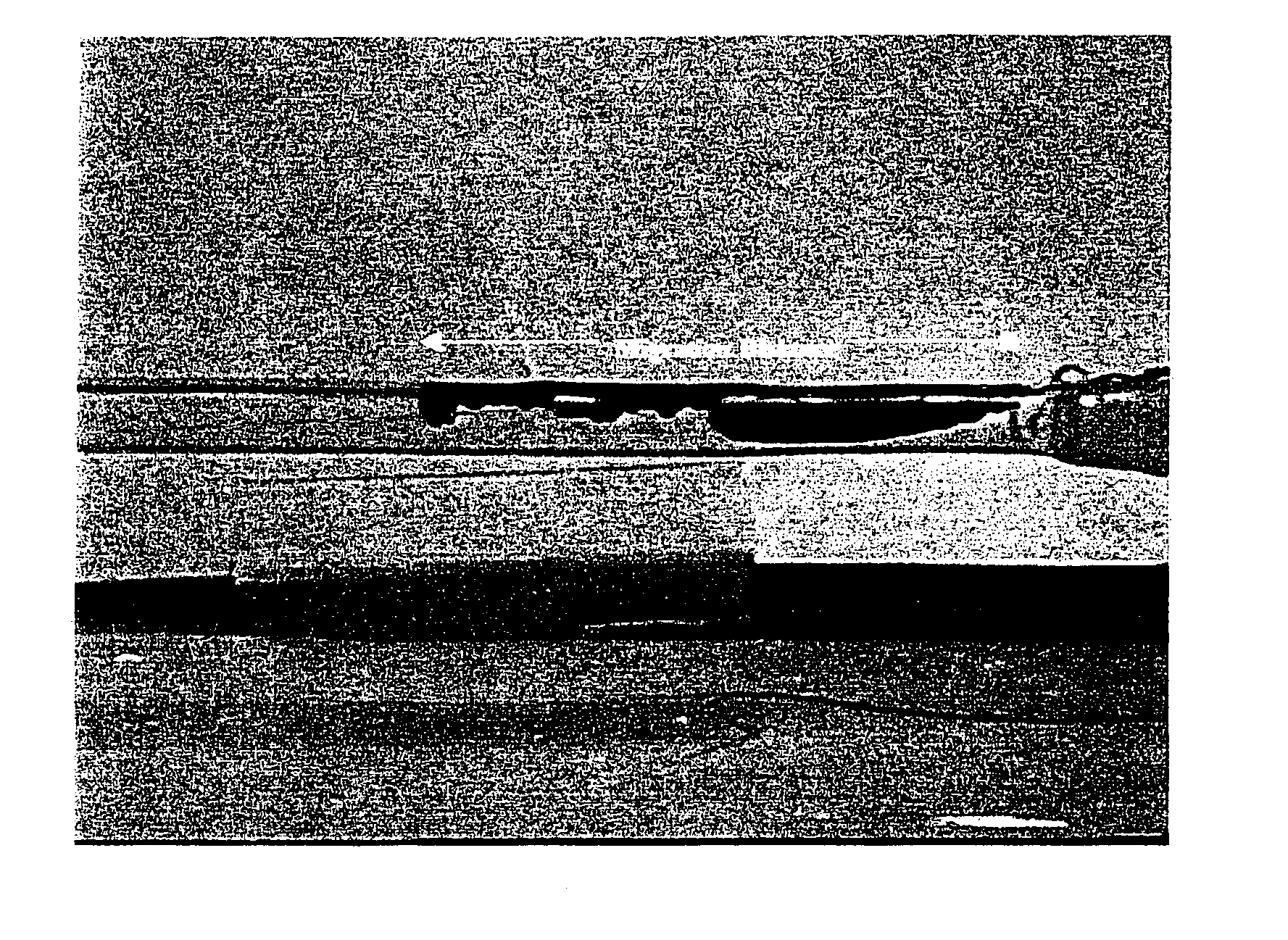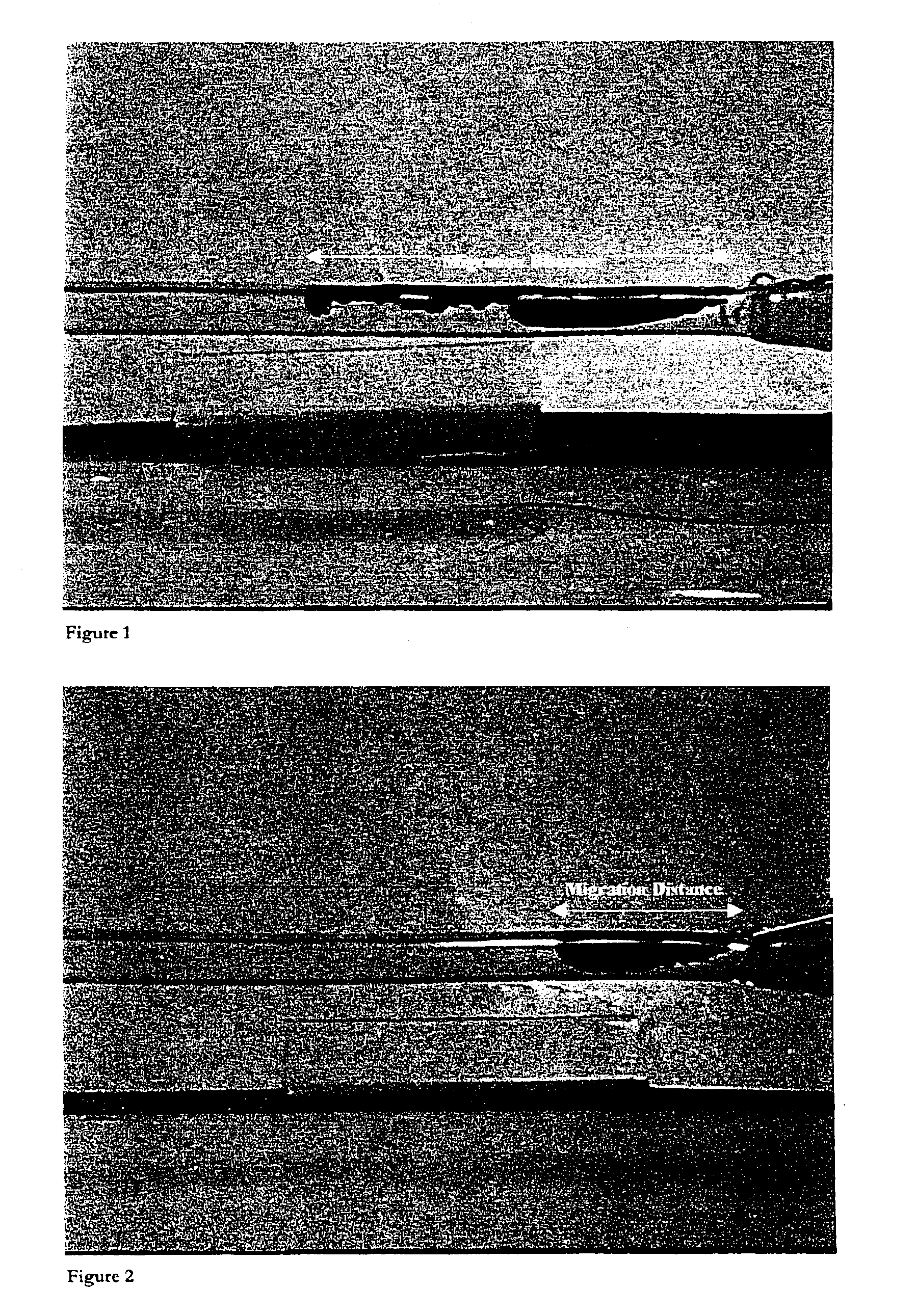High viscosity embolizing compositions
a composition and high viscosity technology, applied in the field of new embolizing compositions, can solve the problems of affecting the migration of catheters from the ejection port of catheters to the vascular site, and achieve the effects of high viscosity, and rapid and consistent solidification
- Summary
- Abstract
- Description
- Claims
- Application Information
AI Technical Summary
Benefits of technology
Problems solved by technology
Method used
Image
Examples
example 1
[0095]This example illustrates the effect of polymer concentration on viscosity and the compositions described herein comprise only biocompatible polymer and biocompatible solvent (DMSO). However, the results of this example correlate to the viscosities of compositions further comprising a water insoluble contrast agent since this agent will not have any significant effect on viscosity.
[0096]In this example, the recited polymer was added to DMSO and stirred until homogenous. Heating of the solution was employed as required to effect dissolution. Viscosities are measure at 40° C. and are reported in cSt. The results are set forth below (all percents are weight percents based on the polymer and solvent):
[0097]
Polymer Type / ConcentrationGrade(% polymer)ViscosityEVOH-110.0078EVOH-116.00346EVOH-28.0055EVOH-210.00103EVOH-216.00472cellulose diacetate (50,000)12.001355cellulose diacetate (50,000)8.00314cellulose diacetate (30,000)12.00176cellulose diacetate (30,000)8.0056
[0098]As is apparent...
example 2
Composition of Example 2
[0104]approximately 17.5 weight % EVOH
[0105]30 weight % micronized tantalum
[0106]approximately 52.5 weight % DMSO
[0107]Viscosity=approximately 1100 cSt at 40° C.
[0108]In each case, after dissolution of the polymer at 50° C. in DMSO with stirring, micronized tantalum (average size 3 μm) was then added. The resulting composition was heated for about 5 minutes at 70° C. then shaken in a vortex mixer for approximately 20 minutes at room temperature to obtain a uniform suspension of the insoluble tantalum in the composition.
example 3
[0109]The purpose of this example is to establish that reduced precipitate migration can be achieved by increasing the viscosity of the polymer composition.
[0110]The compositions of Comparative Example A and Example 2 were tested to determine their relative migration distance under approximate in vivo conditions. Specifically, two identical silicone (optically clear) tubes each having an approximate 4 mm lumen were constructed and an aqueous solution of saline at 37° C. was allowed to flow there through at a flow rate of 130 mL / minute and a pressure of approximately 120 / 80 mm of Hg. The two tubes are labeled Tube A and Tube 2.
[0111]The compositions of Comparative Example A and Example 2 were loaded into 2 separate syringes which were labeled Syringe A and Syringe 2. The 21 French needle of Syringe A was inserted confluently into the lumen of Tube A to provide access into the lumen. Similarly, the 21 French needle of Syringe 2 was inserted confluently into the lumen of Tube 2 to prov...
PUM
| Property | Measurement | Unit |
|---|---|---|
| Temperature | aaaaa | aaaaa |
| Temperature | aaaaa | aaaaa |
| Percent by mass | aaaaa | aaaaa |
Abstract
Description
Claims
Application Information
 Login to View More
Login to View More - R&D
- Intellectual Property
- Life Sciences
- Materials
- Tech Scout
- Unparalleled Data Quality
- Higher Quality Content
- 60% Fewer Hallucinations
Browse by: Latest US Patents, China's latest patents, Technical Efficacy Thesaurus, Application Domain, Technology Topic, Popular Technical Reports.
© 2025 PatSnap. All rights reserved.Legal|Privacy policy|Modern Slavery Act Transparency Statement|Sitemap|About US| Contact US: help@patsnap.com


